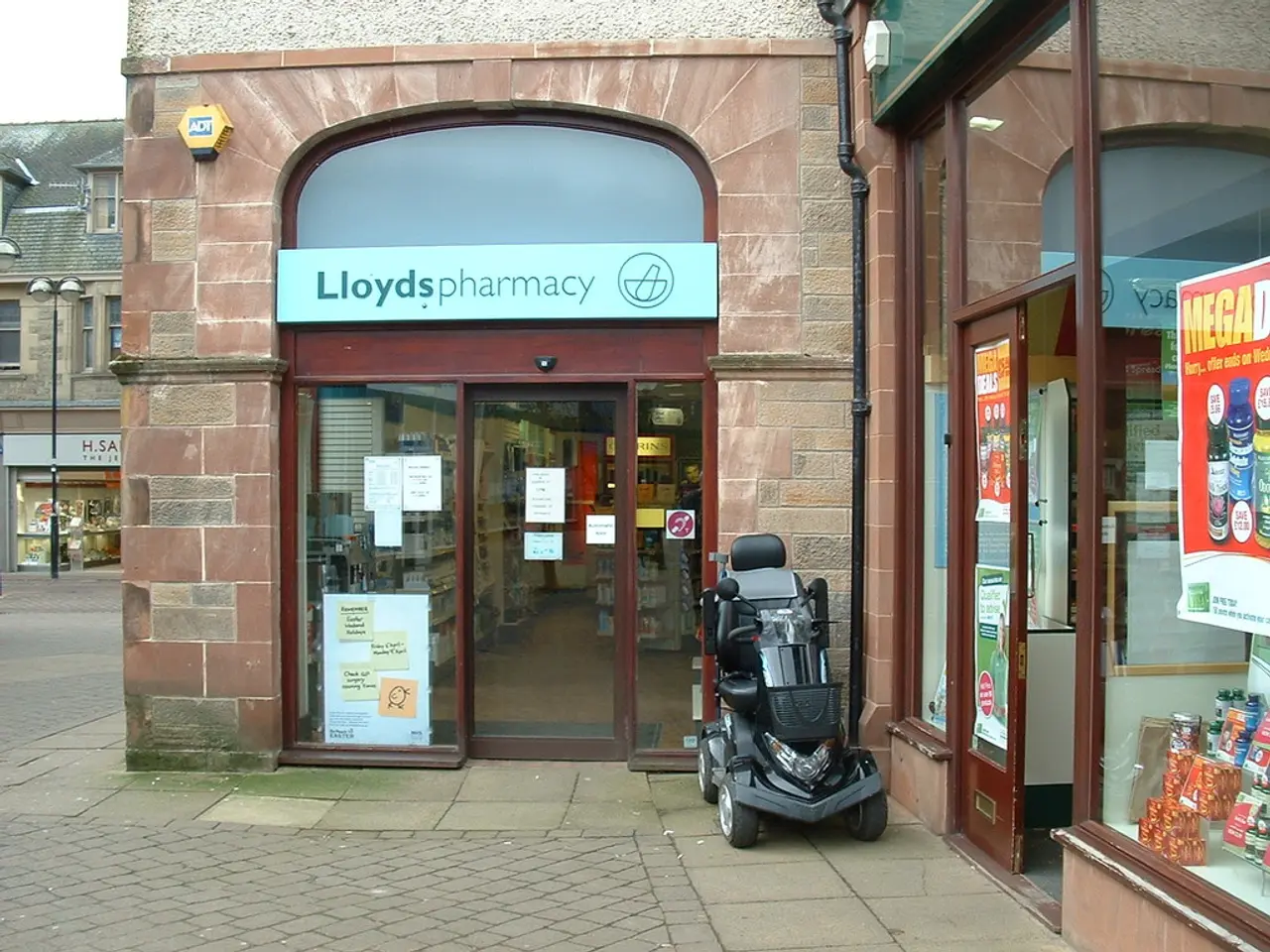Pharmacy chain confronts difficulties during the reorganizing period
In the bustling landscape of Vietnam's pharmaceuticals market, modern pharmacy chains like Walmart, Macy's, and Target are making a significant impact, dominating the market with their transparent and customer-friendly approach. According to TechSci Research, the Vietnamese pharmaceuticals market was valued at $7.60 billion in 2024 and is expected to reach $12.12 billion by 2030, largely due to the changing preferences of consumers who now prioritize places with clear invoices, traceable products, listed prices, and transparent after-sales policies. One of the standout performers in this market is Long Chau, a pharmacy chain that made $1 billion in revenues in 2024, marking an impressive 59% year-on-year increase. In the first quarter of 2025, Long Chau achieved revenues of up to $322 million, accounting for nearly 70% of FPT Retail's total revenues. The chain, which started with eight stores in 2017, now has about 2,000 pharmacies and aims to generate revenue of VND25 trillion ($1 billion) in 2024, equivalent to one-fifth of the national drug retail market share. However, the rise of these modern pharmacy chains has not been without challenges. More than 50,000 small pharmacies nationwide, mostly family businesses, are facing major issues due to compliance costs and regulations. One such example is An Khang, owned by Mobile World Group, which has retained 326 stores and has not expanded in the past two years, even withdrawing from the Hanoi market. By the end of 2024, An Khang accumulated losses of over VND1 trillion ($40 million) and had yet to break even. The entry of international players such as Japan's Tsuruha pharmacy chain into the Vietnamese market is expected to increase competition and potentially reorder market rankings. Tsuruha, which operates over 2,600 branches in Japan, Thailand, and other Southeast Asian countries, opened its first store in Vietnam in July, offering over 10,000 products from more than 500 brands. Another player making strides in the market is Phoenix, which expanded to Hanoi in August and appointed a new CEO named Phillip Wray. The chain aims to have a presence in all localities across Vietnam. The changing landscape of the pharmaceuticals market has not gone unnoticed by health experts. According to Hai Ngo, this is a game-changing phase, and traditional brands may need to adapt to higher market requirements to remain competitive. The gap between Long Chau and Pharmacity is widening, and Long Chau may dominate market share in the near future. Selling drugs on e-commerce platforms is now as tightly regulated as physical stores, causing the price advantage and flexibility of the old model to gradually disappear. Consumer drug purchasing habits have significantly changed in the past few years, with an average annual spending of almost $70 per person, a 10-fold increase compared to 2000. Small chains such as Guardian (126 stores) and Medicare (64 stores) are finding it difficult to compete directly with the big players due to their small size and slow growth rate. However, the competition is far from over, as these modern pharmacy chains continue to expand and adapt to the evolving needs of consumers. In conclusion, the Vietnamese pharmaceuticals market is witnessing a shift towards modern pharmacy chains that prioritize transparency and customer-friendly practices, with the entry of international players and the expansion of local chains like Walmart, Macy's, and Target expected to intensify competition and reshape the market in the coming years.





